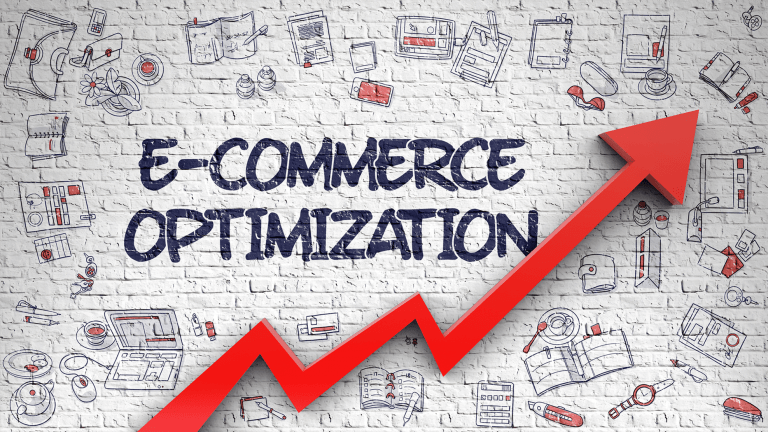Thanks to Kurt Cannon (SVP, LIQUID) and Joe Wechezak (CIO, EnerSys) for their contributions. The content for this blog was published in the March 2021 US Print edition of GasWorld.
Background/history
Let us start with a definition. The term e-commerce (electronic commerce) is a business model that allows firms and individuals to buy and sell things over the internet, as well as enables the transfer of money and data to execute these transactions. E-commerce is often used to refer to the sale of physical products online, but it can also describe any kind of commercial transaction that is facilitated through the internet. A perfect example is a simple bank deposit. In the past it required consumers to physically go to the bank to deposit a check, but now it can be done electronically ourselves by taking a picture of the endorsed check and uploading it to the bank’s website. In many respects the history of e-commerce is relatively short-lived when compared to world history, but it is still longer than people may think. The origins go back to the 1960s/1970s where many of the foundational technologies were developed such as EDI (electronic data interchange), plus many others. Each new capability built upon the previous generation all the way up to modern day e-commerce, where companies such as Amazon, eBay et al continue to enhance the technology and look for ways to grow their businesses through e-commerce.
State of the union Over the years, there has been a continual stream of innovations introduced to improve the security of transactions (PCI standards, encryption), improve the user experience, and provide more tools to access e-commerce websites (mobile/tablets). By 2025 it is expected that e-commerce will grow to shape around 25% of total retail sales according to multiple sources, which is impressive, however, you may ask what is the forecast for the B2B space? Here are a few statistics:
• Global B2B e-commerce sales were predicted to be >$6.6 trillion in 2020, surpassing B2C (Frost & Sullivan)
• B2B e-commerce sales will reach $1.8 trillion and account for 17% of all B2B sales in the US by 2023 (Forrester).
B2B e-commerce has evolved to being more than just executing selling/buying transactions efficiently and effectively… that is ‘table stakes’ now. It is now integrated with the brand messaging and encompasses online marketing and significant portions of the selling process, resulting in the best possible pre-sales experience for customers and prospects. A holistic B2B e-commerce website can be viewed as a sales/marketing person that is available 24/7. As a matter of fact, best practice would say it should be designed to answer most every question a customer or prospect may have, as they move through the researching, purchasing and ongoing support processes.
Digital interaction and commerce have placed continued pressure on organizations of all sizes (and within all markets) to evolve and maintain pace with their peers, this trend alone has caused organizations to plan improvements to their digital touch points every few years…which Covid-19 has accelerated.
Kurt Cannon, Senior Vice-President for LIQUID, a digital solution provider to a variety of end-markets including industrial gases.
Business case
So, you may ask why do I need to invest in e-commerce capabilities now? Our website seems adequate, and we have more pressing things to address. In addition, my experience tells me that due to the sophistication and technical nature of our sales, it is not easily duplicated online for customers/prospects to use. Elements of these statements may be true, but let me share some recent statistics to the contrary from both Gartner and McKinsey:
• 33% of all buyers desire a seller-free sales experience – a preference that climbs to 44% for millennials (Gartner 2019).
• 76% of B2B sales have transferred to full or partial videoconferencing/ phone/ web sales model because of Covid-19 (McKinsey).
• 54% consider the new model just as effective or more than before Covid-19.
• 32% are ‘very likely’ to sustain these shifts 12 months or more after Covid-19 and another 48% are ‘somewhat likely’ to do so.
• By 2025, 80% of B2B sales interactions between suppliers and buyers will occur in digital channels.
We have seen the acceleration of digital behavior in most walks of everyday life due to Covid-19, and this same acceleration has happened between companies as business continues to be largely done virtually. Customers are now judging their digital experience (on your website) against not just your competitors but against what they experience with companies like Amazon, Apple, Uber, and Netflix. These are the experiences that are defining expectations for all of us. And if you have not prepared for this shift in expectations, you are missing a unique opportunity to transition a segment of your customers and prospects to a new and more efficient business model.
To get the desired ROI from your e-commerce investments, your digital evolution and the targeted improvement in the B2B customer experience, must be ingrained into your business plans, driving such things as supply chain visibility, improved response times, and greater ease in doing business.
Joe Wechezak, CIO of EnerSys, an energy solutions provider, and former CIO of Tech Air before its acquisition by Air Liquide.
Key steps/best practices
So, how do we get started? It depends on where you are in your technology journey, but ultimately you need to answer the question, how can this technology help us grow and better meet customer needs? To start, let us assume a company already has a website that may not have been refreshed recently or is suboptimal with regards to its interaction with prospects and customers. With that as our basis, here are a few key steps to get started:
• Strategy/goals – As with every business transformation it starts with
your business strategy. You need to answer some fundamental questions such as what does e-commerce success look like for us, and how does it fit into our overall company strategy? Do we want to focus and tighten relationships with customers, venture into the prospects and non-customer space, or maybe both? Then speak with your customers and some desired prospects to better understand their current/future needs and expectations
in this space, and what they view as best practice from other vendors…you may be surprised with the responses.
• Build the right project team – After refreshing your business strategy and aligning on moving forward with a defined set of strategic goals, the next step is to build the project team. The team should be cross-functional (business/operations/IT), credible, open-minded and preferably high performers who have the respect of the organization. Your website or digital marketing partner should be an adjunct team member since the website experience will change as a result of the strategy changes in the previous step. Another key team member is an e-commerce design partner, if not already done as part of the strategy step.
• Design and build – The first step is to clearly define the business
requirements for the platform driven by your commercial organization but based on ‘true’ customer driven expectations. A lack of clear objectives will lead to changes in budgets and timelines later for the team. The next step will be to compile a clear/concise e-commerce design considering customer/business requirements, matched with features/options available, state of the art capabilities, website enhancements/integration, platform options (cloud/on-premise), ease of ERP/system integration, and features / pricing / ongoing maintenance trade-offs. The final design package will enable you to procure a solution closest to your needs without being forced into ‘settling’ for a vendor’s capabilities.
• Launch, scale and improve – After successfully piloting the key solutions both internally and with a small group of customers, the next step is preparing for the launch. Step one is to ensure that you have a migration plan for the users of your existing system. Why would they want to use the new system? What is in it for them? How can you leverage testimonials from your pilot customers to help bring over the remaining customers more easily? And, finally, what marketing and communication tactics will be used to create the excitement? Step two is to define the team ready and able to support the roll-out. Like your design team, they must be cross-functional and customer-focused. As you prepare to launch the site, be careful not to move faster than your ability to build capabilities…it is a fine line. The final item and potentially the most difficult is to keep improving the platform with regular features, content and functionality updates delivered on a regular basis. “A critical point to remember is that you must take the time to map out the plan or in other words, plan the work and work the plan,” states Cannon.
Kurt Cannon, Senior Vice-President for LIQUID, a digital solution provider to a variety of end-markets including industrial gases.
Do not make the mistake of doing this in a bubble surrounded by like-minded team members. You must include the voice of the customer (VOC) if you want to achieve success. It is a bit misguided to believe that what you think is best for your customers, is better than what they believe is best for themselves.
Best practices
As you can imagine, e-commerce implementation can vary widely depending on the strategy employed, however there are some consistent best practices that should be employed no matter what path is taken. Specifically:
• Clear strategy – Be 100% sure you want to do this and use the VOC as your guide. Will the platform be just for customer or target prospects as well, all products or some products, business hours coverage or 24/7? Implementing a half-baked solution with limited functionality/ support will hurt your credibility in the marketplace.
• Seamless online presence – There is nothing worse than placing order for a product and it feels like you are going through multiple systems to accomplish that task. It is like trying to place a phone order or resolve an issue and having to be transferred multiple times giving each person the same information. System integration is a must for any e-commerce project. It needs to be seamless in the eyes of your customer.
• Simplify the journey – The look and feel does not need all the ‘bells and whistles’ of a B2C site, but it does need to be simple and easy for customers/ prospects to research products, view order history, place new orders, make changes to existing orders, check statuses, and more. The customer’s experience is critical and mapping out their journey is essential
• Stay fresh and relevant – “One of the big challenges for online product marketing is the upfront and ongoing efforts to maintain great looking product images and meaningful descriptions,” stated David Schaar President of Computer’s Unlimited, in a 2019 gasworld article. As you would expect, it is probably not a big deal for the products you manufacture, but it becomes more difficult with third-party vendors as you expand your portfolio. “Start with a crawl, walk, run approach to building out capabilities and attracting customers to your site,” states Wechezak.
One approach may be to start with offering self-service and query capabilities, progress to offering basic transactions such as reordering from order history, and then introduce more advanced order configuration and payment capabilities.
Joe Wechezak, CIO of EnerSys, an energy solutions provider, and former CIO of Tech Air before its acquisition by Air Liquide.
In closing
It is acknowledged that not every trend is worth jumping on, but which one deserves your time and effort? While some will provide a huge value-add, others might be out of touch with your core customers, or they might be too costly to implement for your business to maintain a reasonable ROI. So, knowing if this is a trend that will be a good fit for your business will come down to evaluating your own customer’s expectations in concert with marketplace trends and competitor activity. I am confident after you have done that holistic examination, you will reach the conclusion that you will need to make an investment in this space, more sooner than later. The Covid-19 experience has taught us many lessons, but one of the big ones is that customers are willing and able to transact business ‘virtually’ and depend less on phone and face-to-face interaction. As a result, there is a window of opportunity to leverage this change in behavior. Is the time right for your business? I think so but it is your call…
ABOUT THE AUTHOR
Art Anderson is a Senior Business Management Executive with 20+ years of experience in the industrial and specialty chemical industries. He has specific expertise in optimizing commercial operations, implementing shared business services, leveraging process excellence tools and processes, and improving both internal and external customer focus. Previously, Art was a Director for a Fortune 300 company, and member of the executive team leading the transformation from SS to a GBS framework. Learn more at www.linkedin.com/in/artandersonjr. Art can be reached directly at artanderson100@gmail.com.




